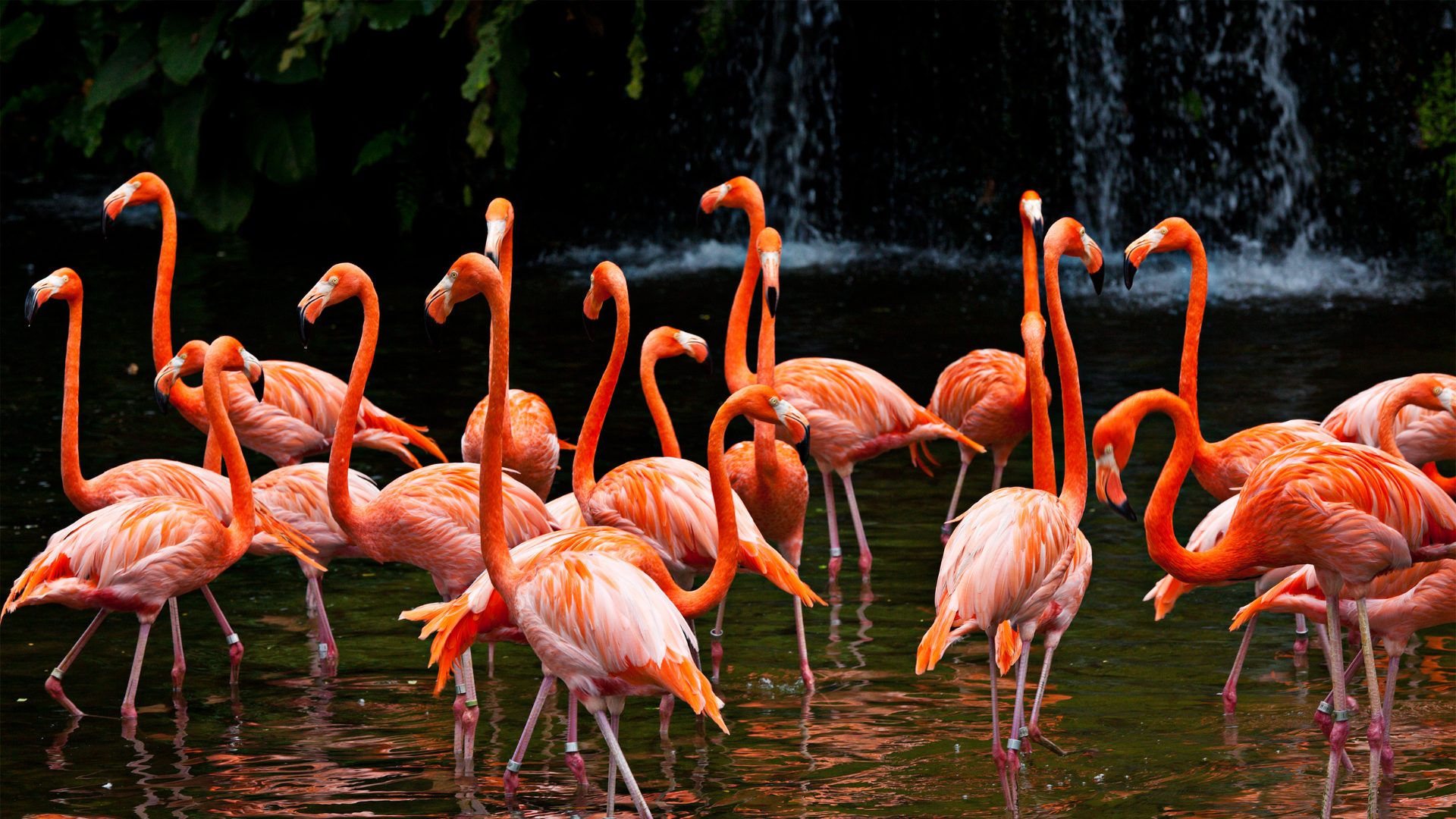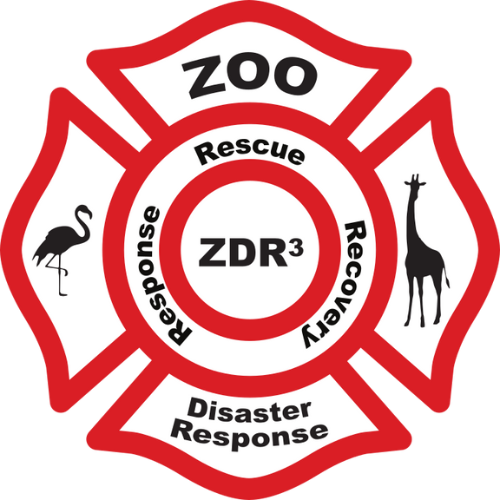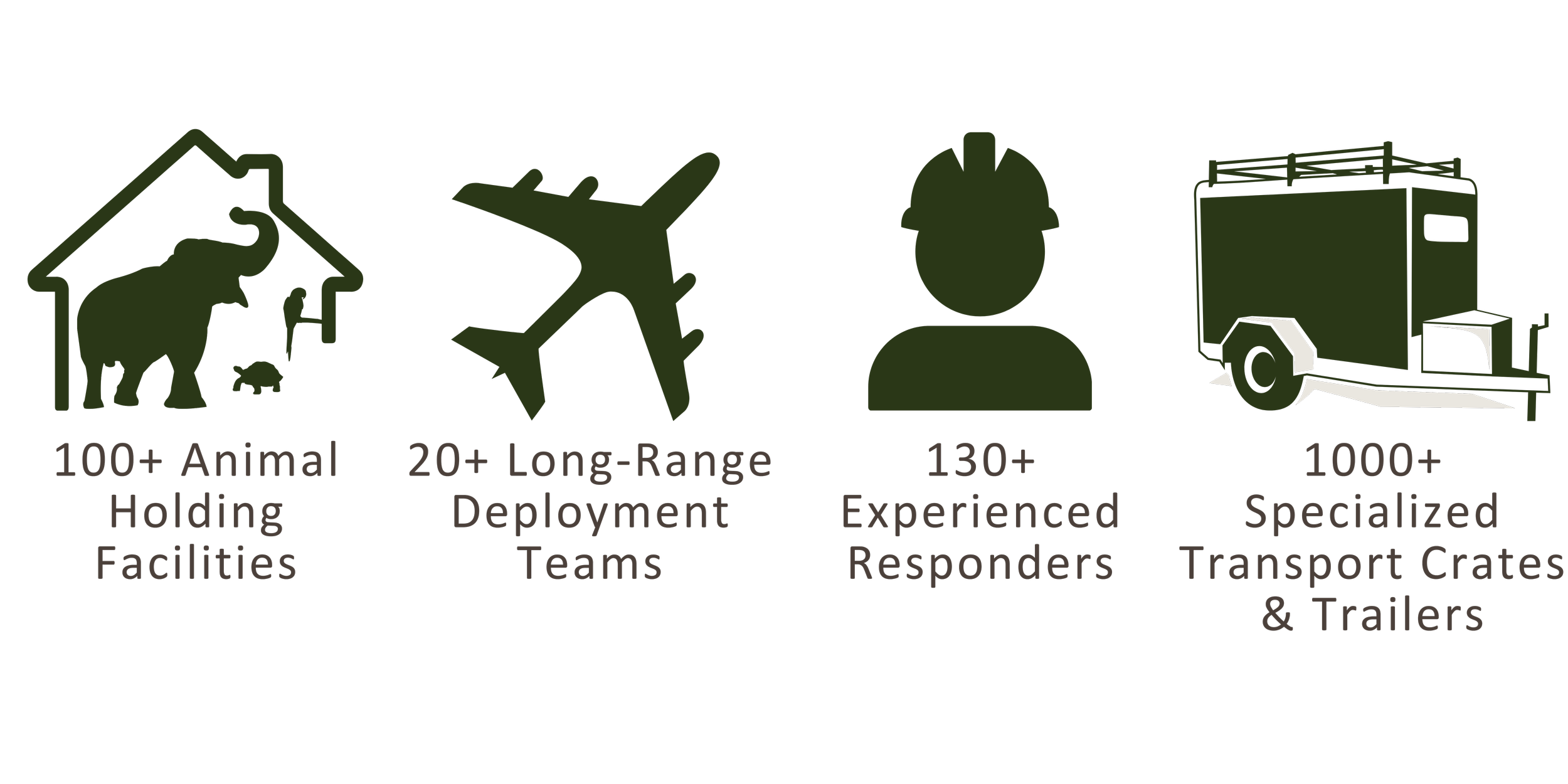
ZDR3 Network
Strength in Numbers
Facilities prepared to deploy response teams are in red.
ZDR3 is the largest zoological disaster network in the United States. When our neighboring colleagues need help, our network members don’t look away. We all work together to take care of our own.
The ZDR3 Network currently consists of more than 215 facility members and related businesses in 40 U.S. states and territories, and all FEMA regions.
ZDR3 Members who join the Network often do so with the goal of helping others: at this time, more than 100 facilities want to deploy personnel to assist their colleagues! Many are willing to travel long distances to help, including by flying responders commercially or privately. Those facilities that are not able to send responders are often willing to provide support in other ways, such as contributing funds, resources, animal holding capacity, or subject matter expertise.
Resources are Available Throughout the U.S.
Response teams often arrive with the supplies they will require—including fuel, equipment, food, and water—when they deploy to an area where essentials are difficult to procure.
Facilities that cannot send a team but want to contribute to a response can donate supplies. Because zoological facilities have very specific needs, especially for ensuring care for their animals, requesting donations from peer facilities is often the most efficient solution.
Supply lines are often disrupted during widespread disasters, such as hurricanes and floods. The ZDR3 Network model enables us to identify resources outside an impact zone and determine how they can be transported to a facility that has requested assistance.
FEMA Regions
The ability to bring resources from multiple facilities to an impacted site is a crucial response element. For example:
an impacted facility’s stockpiled resources may be lost or damaged during an incident, and their transport vehicles may be damaged or otherwise unavailable for use when animals need to be temporarily located
having caches of resources spread throughout the the country allows us to quickly identify the teams and specific resources that can be deployed most efficiently
more resources or manpower may be needed for repairs than a single facility can provide
for extended responses, we cycle teams from different facilities in and out to avoid burnout
The ZDR3 Communications Command Post (CCP) serves as the communications hub for all response-related activities before, during, and after a response. Once we alert the network that we are activated for a potential response, we identify who has the right resources to assist and coordinate handoffs from donating facilities to those en route to a response site.
Join the Network
Learn more about how to join ZDR3.
Fill out the form to receive an example MOU and learn more about how your facility can join the ZDR3 Network.
Or, send an email to:
admin@zdr3.org






